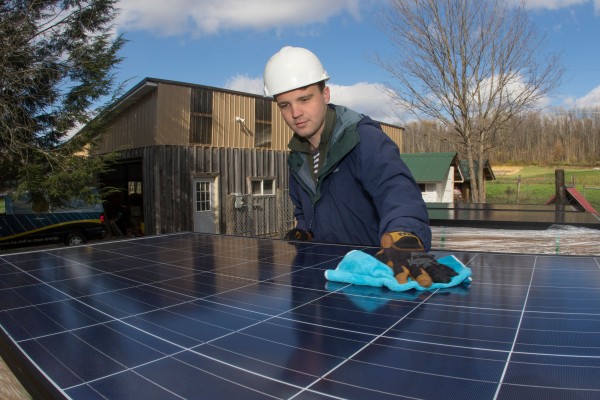Joining Forces on Climate Change

Climate change is perhaps the most complex and pressing problem facing humanity. The possible long-term consequences are catastrophic, whether considering the economic impact of rising tides and eroding shorelines, the political instability produced by extended drought, the tragic loss of life due to direct environmental change or its effects on our lived lives (mass migration, war, food shortages), or the ethical/moral implications of our failures to steward the planet’s resources. The advocates for action on climate change are not some obscure special interest group. They are a broad coalition across the political spectrum — and include Pope Francis, whose encyclical on the environment emphasizes the moral and theological bases for action, and BP CEO Bob Dudley, who joins other industry leaders in making the economic case for transitioning to cleaner fuels.
Taking action on climate change will require skillful, creative and analytical problem solving, the ability to integrate information across a range of disciplines, and, most importantly, passion, determination and leadership to identify and advance the issues that are most important. These attributes will sound familiar to those at Kenyon: They are the primary products of a liberal arts education.
I applaud the work fellow colleges and universities are doing to invest in sustainable practices on their campuses, advance climate research and seed green technology. For Kenyon’s part, we are leveraging our greatest resource — our expertise in education that cuts across the disciplines, that puts students at the center of a multidimensional inquiry (what we call “learning sideways”) — to build the intellectual muscles and ethical stamina to ask the tough questions, not simply to provoke debate but to get to the best solutions. Here are just a few recent examples.
(1.) Biology students in Associate Professor Drew Kerkhoff’s laboratory modeled the impact of climate change on the migration patterns of local species. Economics students with Visiting Professor Robert Alexander consider the efficacy of policies aimed at changing behavior and improving the quality of the environment. Ecology students explore Ohio’s freshwater wetlands with Professor Siobhan Fennessy, examining the effects of changing nitrogen levels. Their research provides invaluable information on the dangerous effects of climate change and gives students the foundation to conduct their own climate change research as they progress to graduate programs and professional careers.
(2.) Last month, students worked with solar energy expert Jerry Kelly ’96 to activate a new solar energy system on the roof of the Village Inn. This work is the product of a solar energy course taught by Eric Holdener, assistant professor of physics and scientific computing, that both benefits the College through its renewable energy projects and instills in students knowledge about the solar industry that they can use long after they leave the Hill. The Village Inn solar project is the second installed by this course; the first was at the Kenyon Farm (pictured above), and we anticipate about a dozen more over the next five to eight years.
(3.) This semester, a group of students developed a proposal for a Green Revolving Fund, to be used for projects to reduce energy usage and lessen Kenyon’s carbon footprint. Renewable energy projects yield significant returns — both financial, from energy savings, and pedagogical, from the learning that their implementation entails for our students. This dedicated fund would help Kenyon continually reinvest in its green initiatives and is being discussed by College leadership.
In each of these examples, students are confronting what it means to work within constraints, to make hard choices in the face of real trade-offs, to weigh short-term gains against long-term good and to manage unintended consequences.
To listen, to learn, to lead. As Kenyon’s president, this is my work, too.
Last year we pledged our commitment to a carbon-neutral Kenyon, and all of us feel the urgency in meeting that goal. While institutions with greater financial flexibility will no doubt get there faster, our pace will be steady and our commitment undeterred. Strategies like establishing a Green Revolving Fund and divesting from fossil fuels are being actively explored and carefully weighed. Proposals come from all corners of the institution, and we will apply our best resources — the rigors of a liberal arts education — to determine our best steps forward.
Forward we march.
